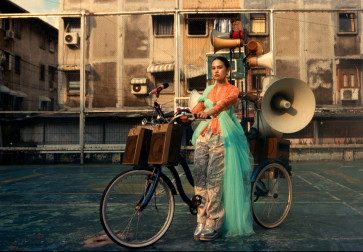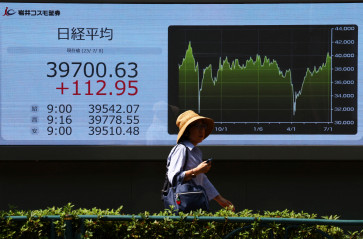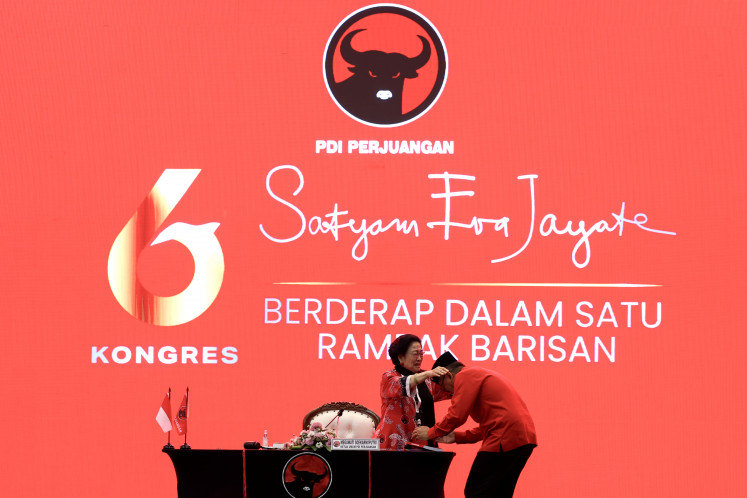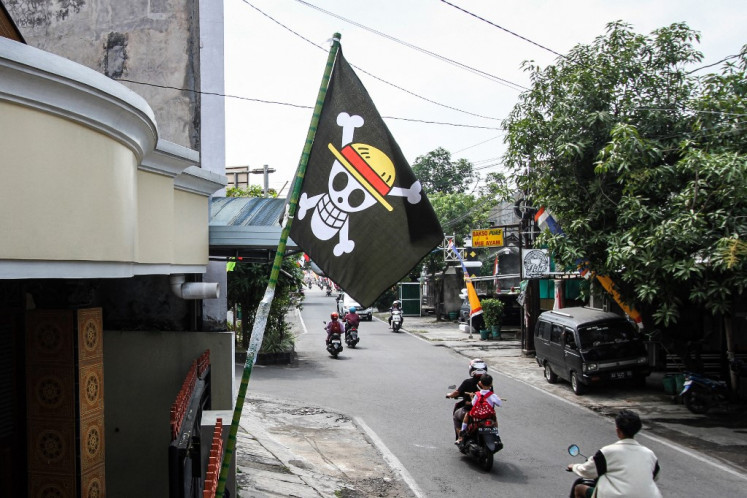Popular Reads
Top Results
Can't find what you're looking for?
View all search resultsPopular Reads
Top Results
Can't find what you're looking for?
View all search resultsMore green areas needed in Makassar
The concept of urban planning in Makassar and a number of cities in South Sulawesi, which tends to alter the existing natural environment without preserving it, has caused a lack of green areas, an official says
Change text size
Gift Premium Articles
to Anyone
T
he concept of urban planning in Makassar and a number of cities in South Sulawesi, which tends to alter the existing natural environment without preserving it, has caused a lack of green areas, an official says.
The amount of open green spaces in Makassar and a number of cities in South Sulawesi is still less than 30 percent. The issue was raised by Darhamsyah, who heads up the Sulawesi and Maluku Eco-region Center under the Environment Minstry’s office in Makassar. According to existing regulations, a city is required to set aside at least 30 percent of the total urban area as green spaces.
Darhamsyah said that in a number of cities, especially in Makassar, many building owners cut down all the trees when they needed to build new buildings.
Ironically, he said, when the projects were completed, they planted trees again. “They do not realize how much money they have to spend and how long it takes to grow trees,” he said. “This is a flawed development concept. Changing the entire natural environment will have an impact on climate change at the micro level. The air becomes polluted, while water catchment areas are depleted. This condition could eventually lead to floods during the rainy season,” Darhamsyah said.
The head of the Indonesian Forum for the Environment’s (Walhi) South Sulawesi chapter, Zulkarnaen, shared a similar assessment. He said green areas, mainly city parks, only covered around 10 percent of Makassar.
Makassar, he added, lacked urban forests that could be freely accessed by the public.
“There are urban forests, such as at Hasanuddin University and Makassar State University, but they are owned by the campuses, and are not owned by the municipality,” Zulkarnaen said.
Changes in the environment alter the equilibrium of the urban ecosystem and its ability to mitigate natural disasters, such as floods and landslides.
Makassar is a flood-prone area during the rainy season. A few hours of rain can lead to flooding of up to half a meter, especially on the city’s main streets. Floods have also hit a number of residential areas.
Makassar resident Abdul Kadir acknowledged the number of urban parks in Makassar was limited.
“We need a city park that is bigger and more tranquil, so we don’t have to travel outside the city to enjoy nature. Our children can become familiar with nature and they wouldn’t have to always go to the mall,” said the father of four.
Reforestation programs have often been carried out in the province. Two years ago, the provincial administration worked together with the Kalla Group and Hasanuddin University in Makassar to plant trees in the mountainous region.
A number of institutions and companies have also been involved in tree planting programs, but tree maintenance remains poor and the current condition of the trees remains unclear.
South Sulawesi Governor Syahrul Yasin Limpo said efforts to replant wastelands and damaged forests were continuously being carried out. “We have already planted around 146 million trees in the past five years,” he said, adding that he, however, was not aware how many of them were still alive.










